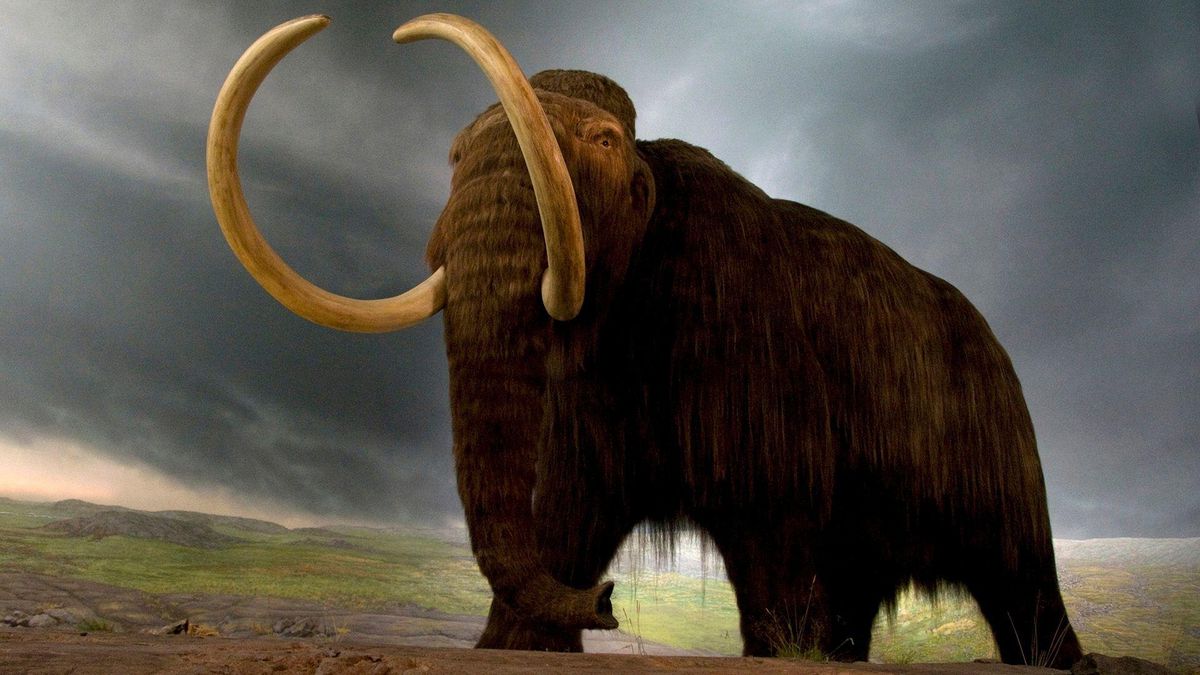Imagine the world 30 years from now—a world where, thanks to the wonders of genetic engineering, we might see the return of creatures long believed extinct. This isn’t just the stuff of science fiction or Hollywood blockbusters like "Jurassic Park." Instead, it's a burgeoning reality as geneticists, armed with revolutionary tools like CRISPR, aim to resurrect the woolly mammoth.
These Ice Age giants, adorned with thick, woolly fur, once roamed the vast northern stretches of our planet. Approximately 4,000 years ago, the woolly mammoth went extinct, leaving only their closest living relatives—the Asian elephants—to walk this earth. Fast forward to today, and some scientists are on the brink of turning back the clock.
Ben Mezrich, in his book "Woolly: The True Story Of The Quest To Revive One Of History's Most Iconic Extinct Species," takes readers from cutting-edge laboratories to the frozen expanse of Siberia. Mezrich's narrative sheds light on how geneticists are inching ever closer to a world where woolly mammoths might once again roam the Arctic tundra.
At the forefront of this endeavor is the larger-than-life geneticist George Church. Standing at a towering 6 feet 8 inches with an iconic mane of white hair and beard, Church is not just any scientist; he's a pioneer in genetic engineering. According to National Geographic, Church’s team has leveraged CRISPR technology to simulate the genetic makeup of the woolly mammoth. They’ve taken DNA from frozen mammoth carcasses and spliced it into the genome of the Asian elephant, creating a hybrid that embodies the essential characteristics of the long-extinct mammoth.
Church’s ambitious project, however, isn’t the only one. On the Siberian steppe, Sergei and Nikita Zimov, a father-son duo, are reintroducing Pleistocene-era animals into a controlled environment known as Pleistocene Park. Their mission is driven by a unique hypothesis: reviving large herbivores could stave off the thawing of permafrost, which traps vast amounts of carbon dioxide. As these areas warm and permafrost melts, this trapped carbon could be released into the atmosphere worsening climate change.
It might sound surprising, but even the idea of trading in mammoth ivory is not entirely foreign. As permafrost thaws, woolly mammoth tusks, often worth up to $250,000, frequently resurface, especially in regions like Yakutia. This trade, especially prevalent in China, isn't illegal since the woolly mammoth is an extinct species. As researchers dig deeper into these ancient carcasses, they find that the genetic material—although degraded—offers a blueprint to recreate the mammoth.
So, how close are scientists to bringing the woolly mammoth back to life? Colossal Biosciences, a Dallas-based biotech company, has made headlines with groundbreaking strides. Using stem cells from Asian elephants, they hope to recreate mammoths fit for the modern age. Co-founder George Church described to NPR, the project's latest success as "probably the most significant step in the early stages of this project." The company envisions a creature that’s not just a genetic twin of the mammoth but rather a hybrid with traits like dense fur and insulating fat, making it adept at surviving freezing temperatures.
However, the project isn't without its detractors. Paleontologist Tori Herridge expressed to the Washington Post concerns about the ethical implications, questioning the potential suffering of elephant surrogates. Critics like Karl Flessa from the University of Arizona have labeled the effort "irresponsible," cautioning that these recreated creatures might face extinction once again due to climate factors.
Despite the criticism, Church sees the woolly mammoth as a potential savior for the environment. He believes these large herbivores can mitigate climate change by preventing permafrost melt. "They're a lot of reasons to restore that environment to what it was," Church mentioned. He emphasized the mammoth's role as a keystone species necessary for maintaining that delicate ecosystem.
The debate over resurrecting woolly mammoths naturally gives rise to broader ethical questions. Risa Schnebly, a graduate student at Arizona State University, elaborated that the process isn't about cloning in the traditional sense. Instead, it involves creating a new species by integrating mammoth genes into those of the Asian elephant using CRISPR technology. As a result, it's more accurate to describe these efforts as "creating a new species" rather than bringing back an existing one.
Schnebly also noted the potential benefits of such high-profile projects. They attract substantial funding from wealthy donors and institutions—funding that can be channeled into conservation efforts for existing species and rehabilitating their habitats. However, experts like Matt Chew caution against using finite resources for such "de-extinction" endeavors, suggesting there might be more pressing conservation needs.
This sentiment of cautious optimism was echoed by James Collins from the ASU School for the Future of Innovation in Society. Collins conceded the potential environmental risks but argued the knowledge gained could greatly advance conservation science. Imagine future zoos showcasing woolly mammoths, much like current exhibits of lions or tigers. Collins emphasized that public interest could drive further research and understanding, benefiting wider ecological efforts.
While the journey to resurrect the woolly mammoth is fraught with challenges and ethical dilemmas, it also promises unprecedented advancements in genetic engineering and conservation science. If successful, these projects could not only bring back a piece of the Ice Age but also help mitigate modern environmental issues. Regardless of where one stands on the ethics, one thing is clear: the next few decades in paleogenomics will be nothing short of revolutionary.
In Mezrich’s words from his conversation with National Geographic, "We now have these genetic tools, specifically CRISPR, which is a revolution in the science of genetic engineering... The world we live in is going to be a different place in 30 years because of what's going on in laboratories now." Whether we view these endeavors as bold experiments or playing God, they undeniably underline humanity's increasing dominion over the building blocks of life.




